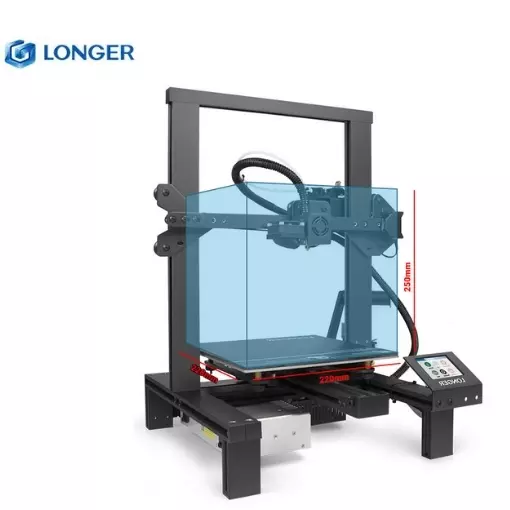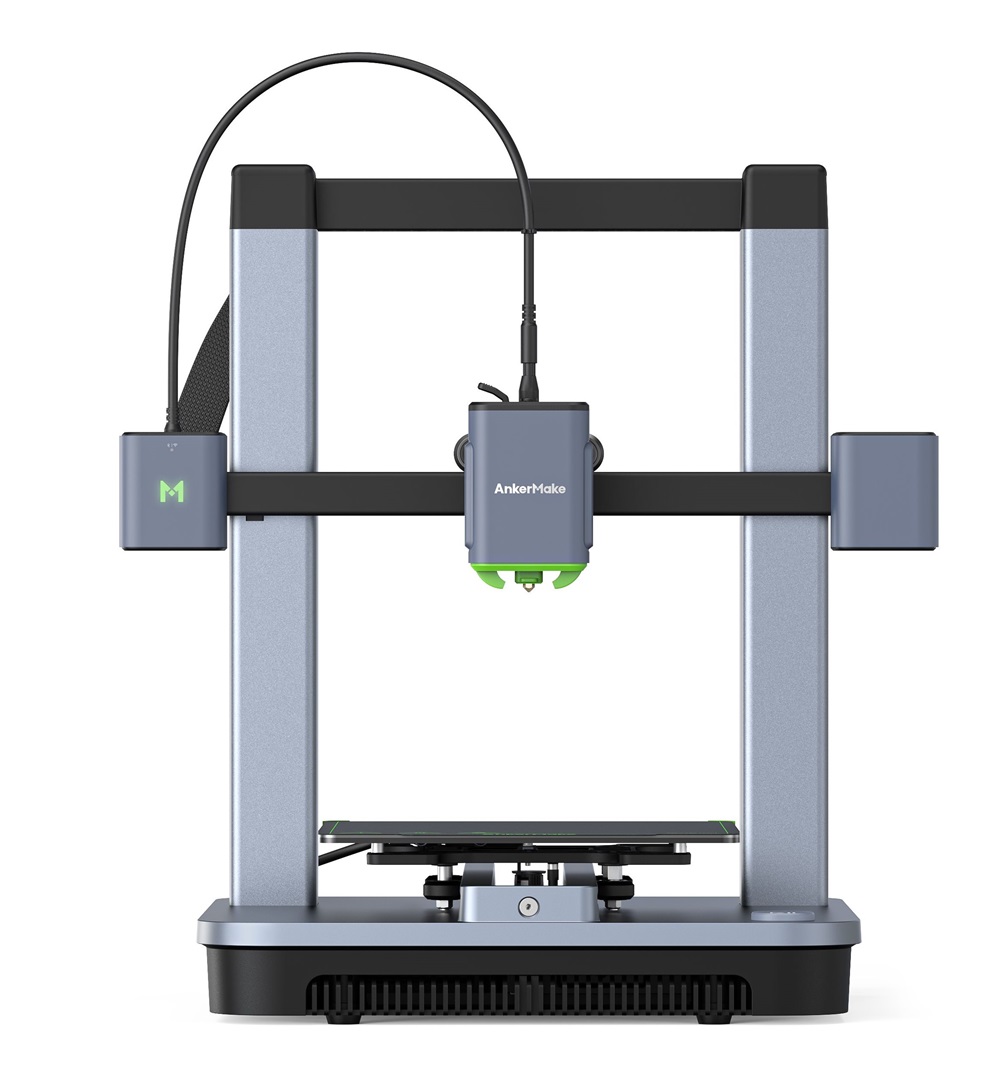Compare LK4 vs M5C
Comparison between the best 3D printers
Choose the best 3D printer at the best price. The cheapest 3D printers are here.
Buy a 3D printer here with 3D Fila.
 |
 |
|
| Model | LK4 |
M5C[BUY M5C] |
| Printing Material | Filament | Filament |
| Buy Filament for Longer 3D LK4 | Buy Filament forAnkerMake M5C | |
| Estimated price | $200,00 | $399,00 |
| Manufacturer | Longer 3D | AnkerMake |
| Release Year | 2019 | 2023 |
| Print Volume [mm] | 220x220x250 | 220x220x250 |
| Printer Size [mm] | 402x425x505 | 466x374x480 |
| Weight [kg] | 7,8 | 9,6 |
| Power Loss Recovery | YES | YES |
| Enclosed printer | NO | NO |
| Bed Leveling | Manual com Assistência | Automatic |
| Filament End Sensor | YES | YES |
| Bed type | Heated | Heated |
| Power supply system | Bowden | Direct Drive |
| Standard nozzle | 0,4 | 0,4 |
| Maximum Nozzle Temperature [°C] | 250 | 300 |
| Maximum Bed Temperature [°C] | 100 | 100 |
| Maximum printing speed [mm/s] | 120 | 500 |
| Filament holder | YES | YES |
| Camera for supervision | NO | NO |
| Recommended filaments | PLA, TPU, ABS, PETG | PLA, PETG, TPU, ABS, PA, PLA-CF, PETG-CF, PA-CF |
| Recommended slicers | Cura, Simplify, Slic3r | AnkerMake Studio (macOS, Windows), Simplify3D, Ultimaker Cura, PrusaSlicer |
| Maximum Resolution [mm] | 0,1 | 0,1 |
| Processor | 8 bits | |
| Display | Touchscreen TFT 2,8'' | |
| Power Supply | 12V / 360W | 350 W |
| Connectivity | SD / USB | Wi-Fi, USB-C, Bluetooth |
| Operating systems | Windows, Mac, Linux | Windows, Linux e Macbook |
| Date of registration in the system | 2021-04-15 | 2024-09-11 |
| Release date | 2019 | 2023 |
| Extra features | The Longer LK4 is a versatile 3D printer capable of working with a wide range of filaments, such as PLA, ABS, TPU, copper, wood and carbon fiber, thanks to its 0.4mm nozzle and heated bed up to 110°C. With a printing accuracy of between 0.05-0.4mm, it stands out for its solid construction with an aluminum frame, weighing around 7kg, and a robust 24V and 15A power supply. The kit includes an Allen key, a 7/10 key, a microSD card with USB adapter, a spatula, cable ties, a power cable, 5m of filament and a spare filament end sensor. Assembly is simplified, with around 90% of the equipment pre-assembled, and detailed instructions assist in the process. Special features include print recovery after power failure, a filament end sensor, a super-adhesive printing surface and an intuitive color touchscreen display. The design features smooth profiles for easy assembly, and the position of the filament holder optimizes the filament path to the extruder. The LK4 is a solid choice for 3D printing enthusiasts looking for quality and versatility. | The AnkerMake M5 printer stands out for its impressive print speed, reaching up to 500mm/s. It features AI print monitoring, an integrated camera for creating timelapses, auto-leveling bed with pressure sensor, direct extruder, flexible PEI-coated build plate, and Wi-Fi and USB-C connectivity. Assembly is quick and easy, and the printer is designed to deliver high print quality and ease of use. |
| Support for multiple colors and materials (AMS and CFS) | NO | NO |
Notes * |
||
| Cost-benefit | 7 / 10 | 7 / 10 |
| Hardware | 2 / 10 | 2.8 / 10 |
| Tela | . | . |
| Print volume | 3 / 10 | 3 / 10 |
| Performance | 1 / 10 | 4 / 10 |
| [BUY M5C] |
Conclusion |
| In comparing the Longer 3D LK4 and the AnkerMake M5C 3D printers, several key differences and advantages emerge, guiding potential buyers toward the printer that best suits their needs. The LK4, while being the more budget-friendly option, offers a solid performance with its ability to handle a variety of filaments. Its manual bed leveling may require more hands-on setup, but the inclusion of features such as a filament end sensor and a reliable recovery system enhances its reliability for new users. The LK4 is also lightweight and compact, making it a good choice for those with limited space. On the other hand, the M5C, which is a newer model, showcases advanced features that set it apart, such as a high printing speed of up to 500mm/s and automatic bed leveling. This allows for a more user-friendly experience, particularly for users who may not want to deal with the intricacies of manual calibration. The M5C's direct drive system and broader compatibility with filaments, including advanced materials, position it as a versatile tool for serious enthusiasts and professionals. Its connectivity options, including Wi-Fi and Bluetooth, as well as its integrated AI monitoring, add a level of convenience that the LK4 lacks. In terms of cost-benefit analysis, both models score reasonably well, with the LK4 providing a better entry point for beginners. However, for those seeking higher performance, convenience, and efficiency, the M5C offers substantial value for its higher price. Overall, the choice between the Longer LK4 and AnkerMake M5C hinges on the user’s budget, desired features, and printing proficiency. The LK4 is ideal for beginners or those with budget constraints looking for a reliable starter printer, while the M5C appeals to users seeking advanced functionality and speed, making it suitable for more demanding printing projects. |

